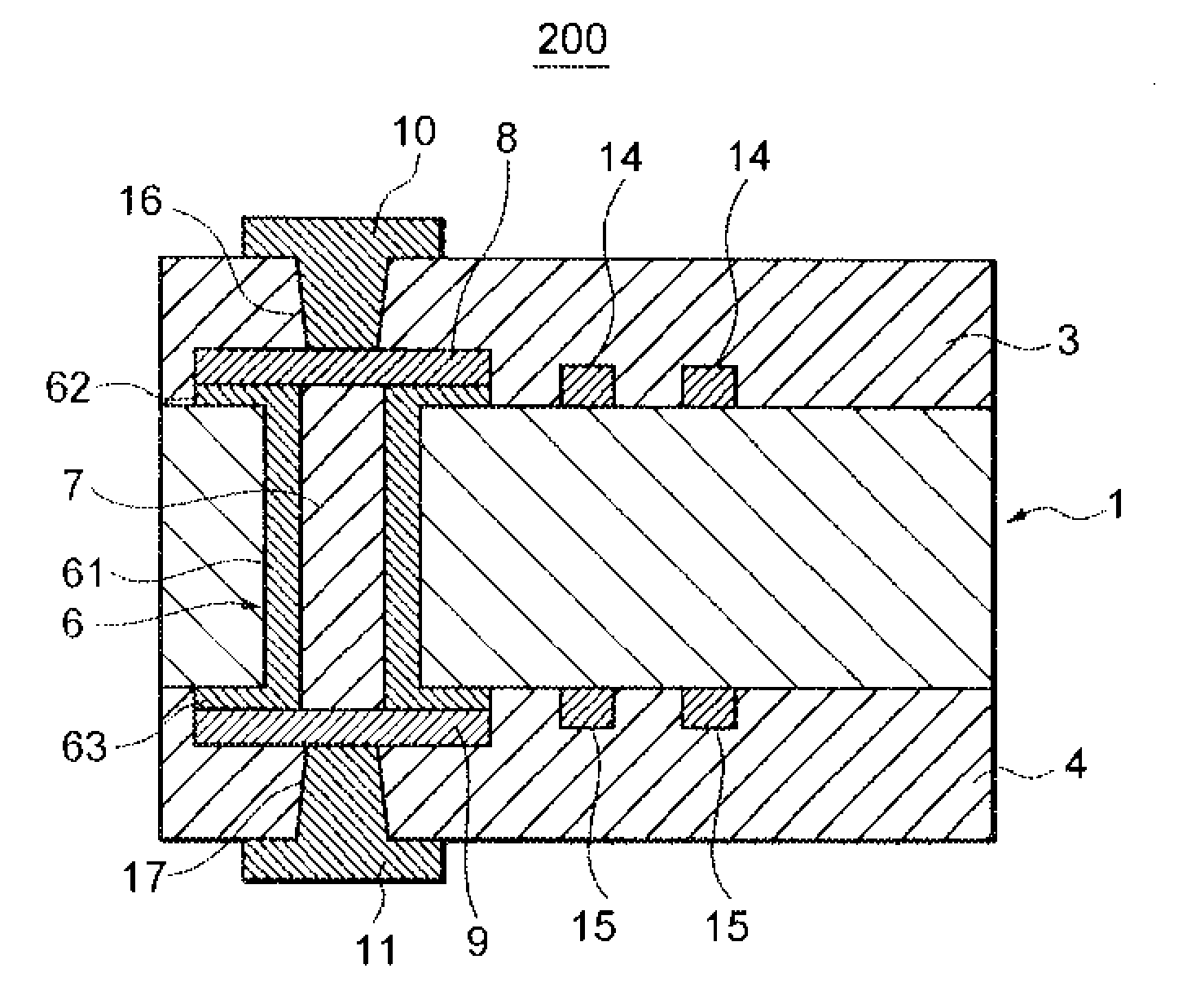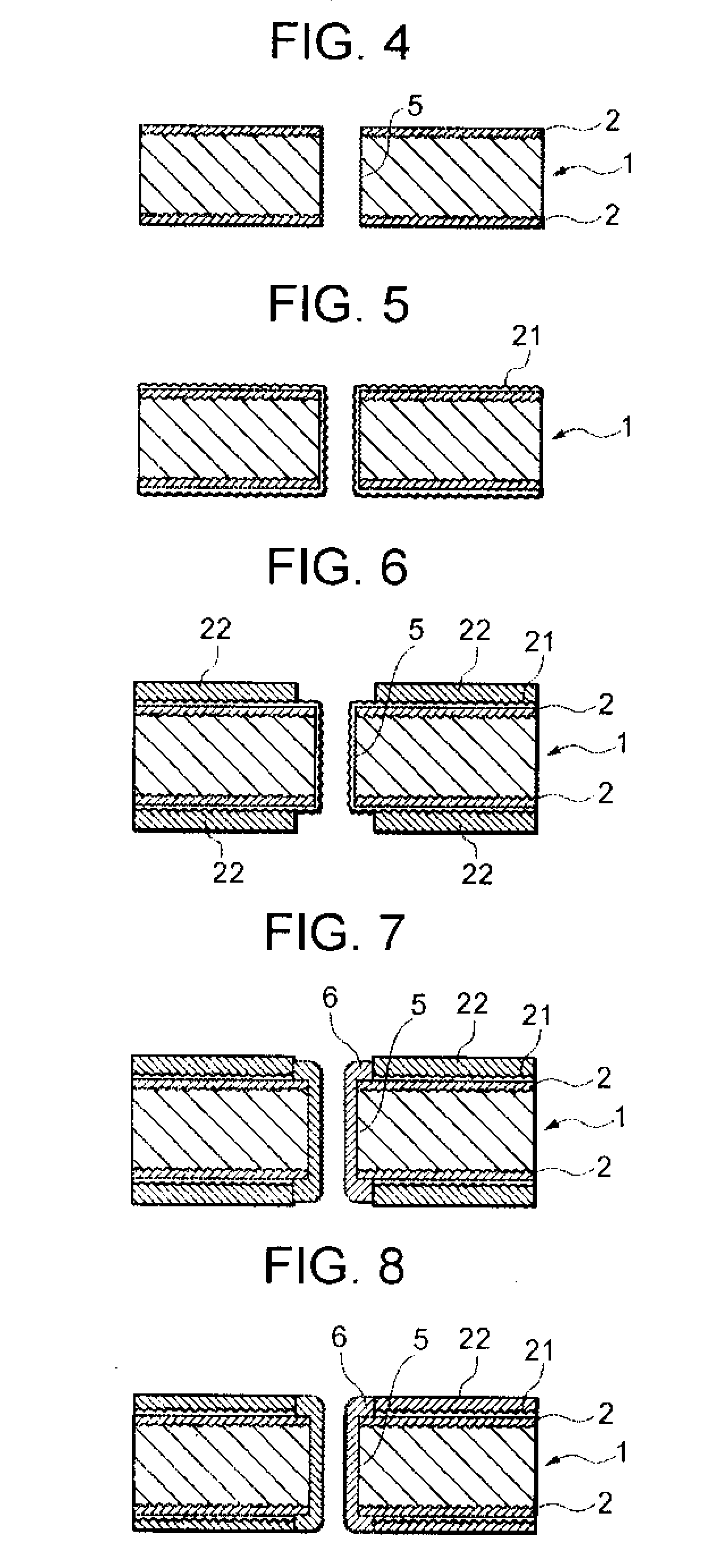Method for manufacturing printed wiring board and printed wiring board
a manufacturing method and technology of printed wiring, applied in the direction of printed element electric connection formation, printed circuit aspects, conductive pattern formation, etc., can solve the problems of reducing the diameter of the through hole conductor b>51/b>, unable to remove unnecessary resin parts, and unable to achieve electrical continuity. , to achieve the effect of increasing the thickness of the capped conductor
- Summary
- Abstract
- Description
- Claims
- Application Information
AI Technical Summary
Benefits of technology
Problems solved by technology
Method used
Image
Examples
Embodiment Construction
[0036] Hereinbelow, embodiments of the present invention will be described in detail with reference to the drawings. The same or corresponding portions are assigned the same reference numerals in the figures to thereby avoid repetition of description thereof.
[0037]FIG. 1 is a sectional view showing a structure of a printed wiring board 100 according to an embodiment of the present invention. Referring to FIG. 1, the printed wiring board 100 comprises a copper-clad laminate board 1 with upper and lower copper foils 2 attached thereon, an insulating layer 3 formed on an upper surface of the copper-clad laminate board 1, and an insulating layer 4 formed on a lower surface of the copper-clad laminate board 1.
[0038] The copper-clad laminate board 1 is formed with a through hole 5 leading from its upper surface to its lower surface. A through hole conductor 6 is formed on a surface of the through hole 5 and on the upper and lower surfaces of the copper-clad laminate board 1 in the vicin...
PUM
| Property | Measurement | Unit |
|---|---|---|
| thickness | aaaaa | aaaaa |
| thickness | aaaaa | aaaaa |
| temperature | aaaaa | aaaaa |
Abstract
Description
Claims
Application Information
 Login to View More
Login to View More - R&D
- Intellectual Property
- Life Sciences
- Materials
- Tech Scout
- Unparalleled Data Quality
- Higher Quality Content
- 60% Fewer Hallucinations
Browse by: Latest US Patents, China's latest patents, Technical Efficacy Thesaurus, Application Domain, Technology Topic, Popular Technical Reports.
© 2025 PatSnap. All rights reserved.Legal|Privacy policy|Modern Slavery Act Transparency Statement|Sitemap|About US| Contact US: help@patsnap.com



